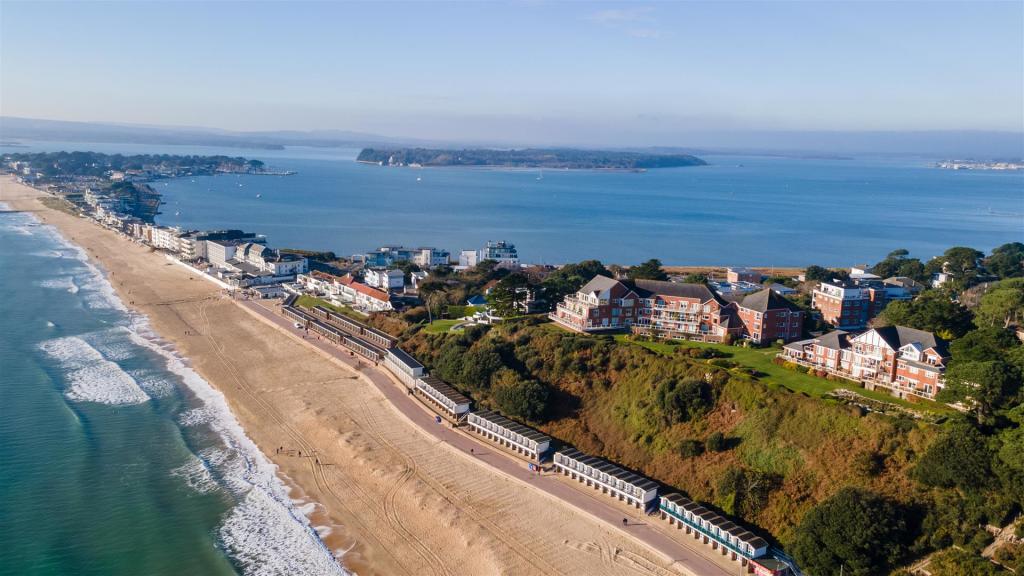The 10 most in-demand coastal hotspots this year
There is something magical about the thought of fresh sea air, taking a quick dip after work, and spending weekends on a beach, or in a sailboat.
More home-movers have been inspired to head to the coast in the past year, seizing the opportunity to move as the rise of working from home has meant that for some, the dream of living near the sea could finally become a reality.
And, even in the winter months, demand for seaside homes continues to be strong. Bournemouth, Southampton and Brighton are leading the charge, with the biggest number of enquiries from home-hunters on Rightmove in 2021.
Take a look at the 10 most sought-after coastal towns:
1. Bournemouth, Dorset
Average asking price: £317,449
Average asking price increase (2021 vs 2020): 4%
Bournemouth is the most in-demand coastal location for buyers this year. This south coast holiday hotspot has seven glorious miles of sandy beaches, the Jurassic Coast on the doorstep, and 2,000 acres of green space. There’s also a massive range of property, from multi-million pound Victorian and Edwardian villas, to 1930s family houses, Art Deco seaview apartments, and three-bedroom period semis priced between £350,000 and £400,000.
Take a look at homes for sale in Bournemouth, Dorset
2. Southampton, Hampshire
Average asking price: £249,053
Average asking price increase (2021 vs 2020): 4%
Southampton, in Hampshire, takes second place. This is a university city, and a port city, with a large marina in the heart of the town centre. It’s close to both the South Downs and the New Forest. The average price stands at just above £249,000, and you can find a two- to three-bedroom terrace house around that budget.
Take a look at homes for sale in Southampton, Hampshire
3. Brighton, East Sussex
Average asking price: £461,796
Average asking price increase (2021 vs 2020): 5%
Buzzing Brighton is the obvious choice for those who want to live beside the seaside, without missing out the fun of living in a city. Around Kemptown, you can find lovely white, stucco houses, many of which have been converted into flats, while The Lanes area has sweet little cottages on its narrow streets. Further inland, Preston Park has larger houses and a slightly less frenetic vibe.
Take a look at homes for sale in Brighton, East Sussex
4. Blackpool, Lancashire
Average asking price: £137,301
Average asking price increase (2021 vs 2020): 8%
The sparkly jewel of the north west, Blackpool is famous for its fabulous six-mile stretch of lights and illuminations, which have been attracting visitors at this time of year since 1879. It’s also in a great location, within commuting distance of Preston, Liverpool, Bolton, or Manchester. You’ll find streets of period houses here, as well as large, modern homes.
Take a look at homes for sale in Blackpool, Lancashire
5. Poole, Dorset
Average asking price: £406,566
Average asking price increase (2021 vs 2020): 5%
With the world’s second-largest natural harbour, Poole is the ideal spot for buyers who love being on the water. Its’ “millionaires’ row” is Sandbanks, a narrow, sandy estuary with blingy Californian-style mansions – the most expensive is priced around £6 million. There’s also a good range of properties in the area, from period townhouses to period terraces, and modern flats.
Take a look at homes for sale in Poole, Dorset
6. Southport, Merseyside
Average asking price: £215,838
Average asking price increase (2021 vs 2020): 5%
Just 30 miles south of Blackpool, Southport is a smaller and quieter option with a lovely sandy beach and several parks. Here, you can pick up a roomy, four-bedroom period house for around £300,000 to £400,000, a semi for less than £200,000, or a starter flat for circa £75,000.
Take a look at homes for sale in Southport, Merseyside
7. Eastbourne, East Sussex
Average asking price: £306,546
Average asking price increase (2021 vs 2020): 6%
Eastbourne is in a wonderful location close to the South Downs, the schools are good, and the town centre has a good choice of gastropubs and cafes. You can find a good choice of Victorian and Edwardian houses here, and solid transport links to London.
Take a look at homes for sale in Eastbourne, East Sussex
8. Worthing, West Sussex
Average asking price: £354,361
Average asking price increase (2021 vs 2020): 6%
Worthing is cheaper than either Brighton or Hove, and has therefore been attracting upsizers as well as London commuters – trains take an hour and 20 minutes. Property ranges from Regency townhouses to fisherman’s cottages, Victorian terraces and period conversions, and some very slick new flats.
Take a look at homes for sale in Worthing, West Sussex
9. Hastings, East Sussex
Average asking price: £295,096
Average asking price increase (2021 vs 2020): 10%
Hastings is a seaside resort town on the south coast of England with a scenic historic centre full of interesting little shops and artists’ studios. Property-wise, you can choose from stunning cliff-top homes, pastel-painted townhouses, waterboarded cottages, and modern flats.
Take a look at homes for sale in Hastings, East Sussex
10. Weston-Super-Mare, Somerset
Average asking price: £252,339
Average asking price increase (2021 vs 2020): 5%
Weston has a sandy beach overlooking the Bristol Channel, a good-looking seafront, and some exceptional quality Victorian houses built from creamy Bath stone. You can be in Bristol (by train) in less than 20 minutes. Independent restaurants and cafes are another plus point, and the Mendip Hills are just to the south of town.
Take a look at homes for sale in Weston-Super-Mare, Somerset
READ MORE: Where is the happiest place to live in Britain?
The header image for this article is provided courtesy of Lloyds Property Group, Lilliput



